Abstract
In workers chronically exposed to cadmium and without signs of renal insufficiency, plasma proteins with molecular weight ranging from 11,800 to 450,000 are excreted in greater amount in urine. Increased urinary excretion of low and high molecular weight proteins can occur independently. Because of its greater stability in urine and provided a sensitive immunological technique is used, the determination of retinol-binding protein is a more practical and reliable test of proximal tubular function than beta 2-microglobulin. The evaluation of renal function of workers removed from cadmium exposure indicates that cadmium-induced renal lesions, albeit of slow progression, are not reversible when exposures ceases. In workers chronically exposed to cadmium or removed from cadmium exposure, metallothionein in urine is directly correlated with cadmium in urine but not with cadmium in blood or years of cadmium exposure. The association between cadmium in urine and metallothionein in urine is independent of the status of renal function and the intensity of current exposure to cadmium. Whereas the repeated IP injection of high doses of cadmium to rat gives rise to a mixed or tubular type proteinuria, the prolonged oral administration of cadmium results mainly in the development of a glomerular type proteinuria. The former is usually reversible after cessation of treatment whereas the latter is not. Circulating antiglomerular basement membrane antibodies have been found in man and in rat chronically exposed to cadmium. The pathogenic significance of this finding deserves further investigation.
Full text
PDF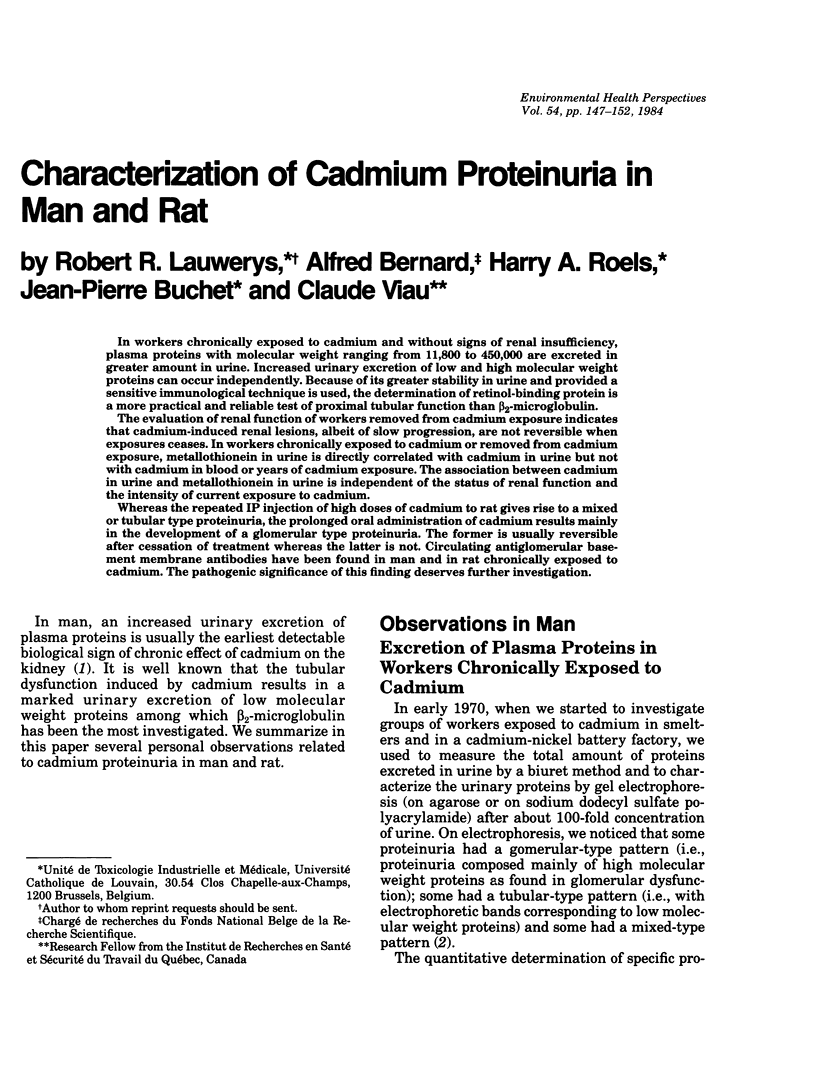
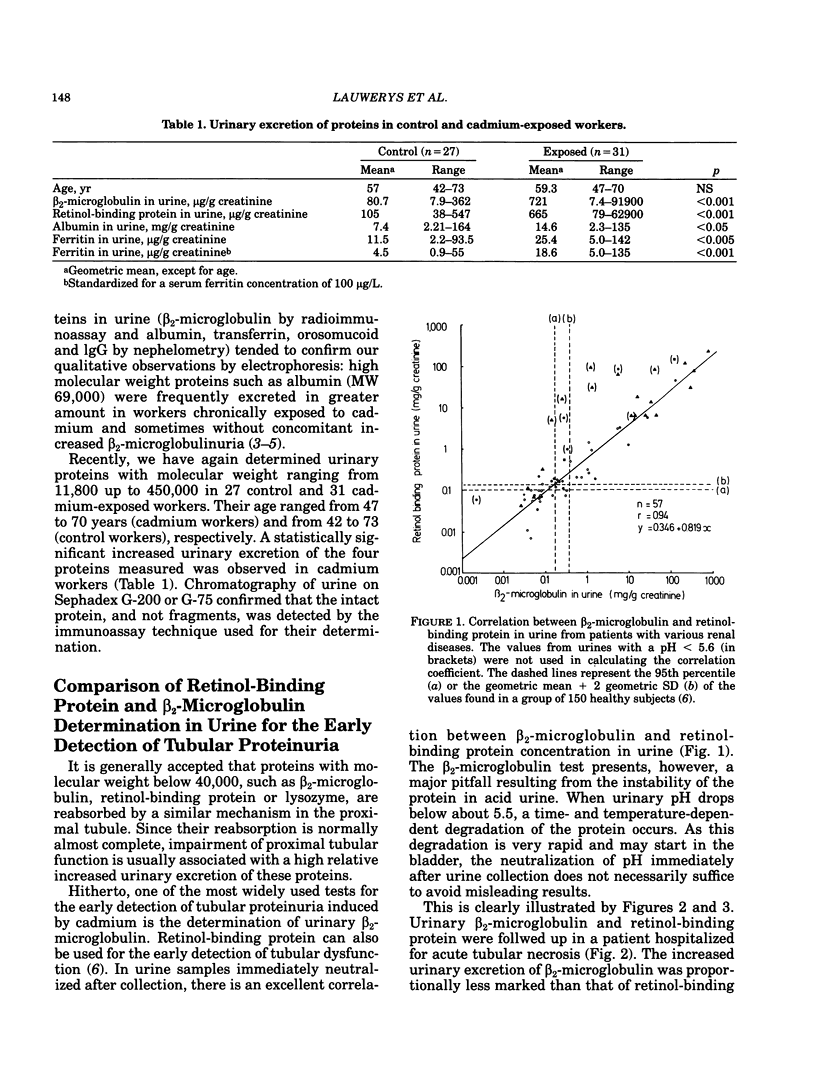
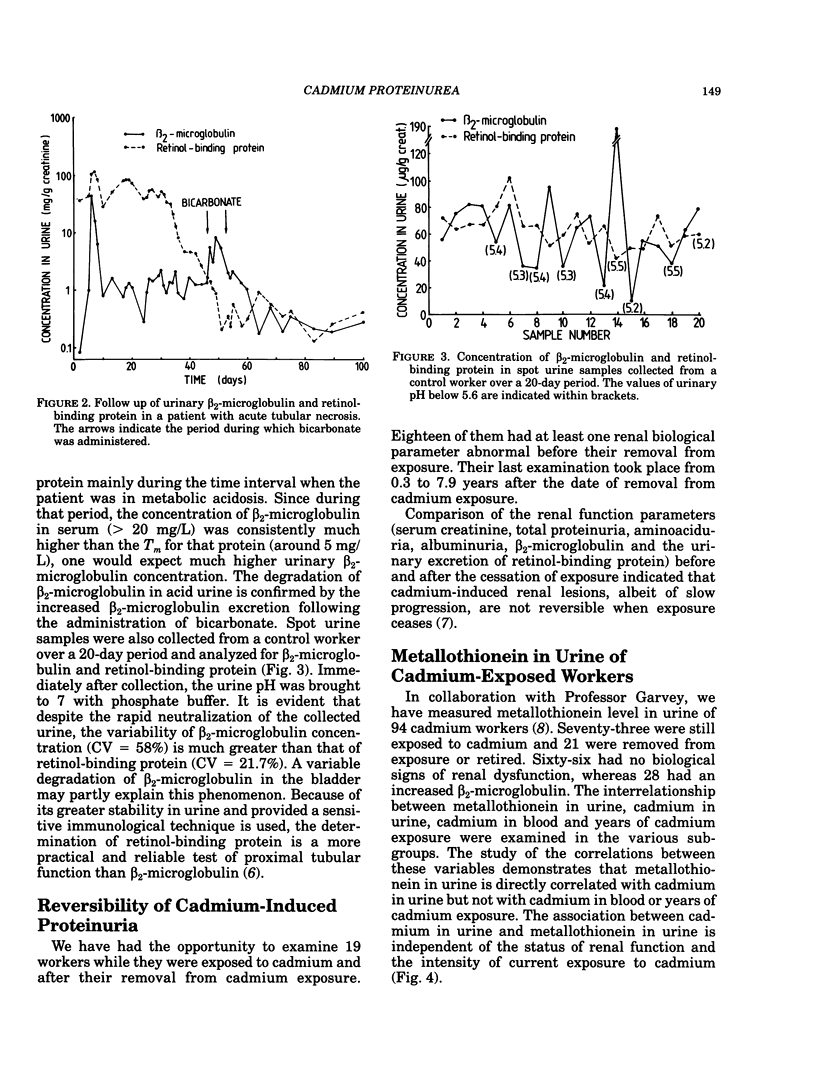
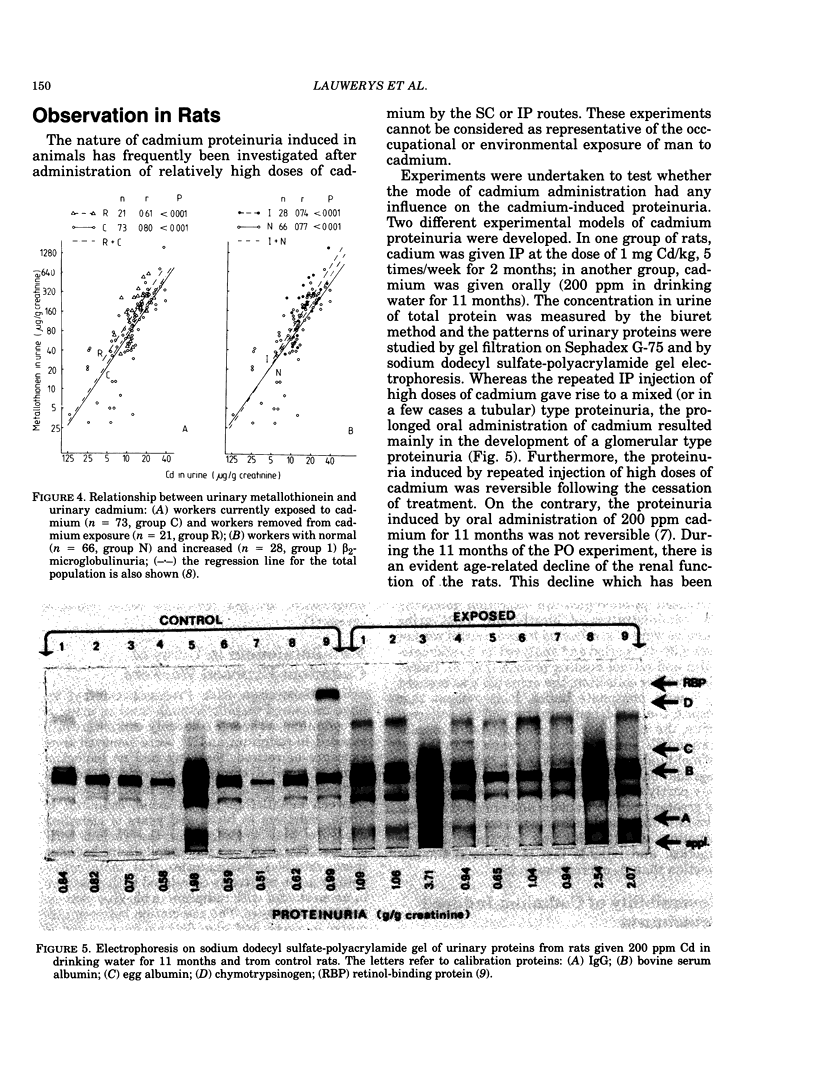
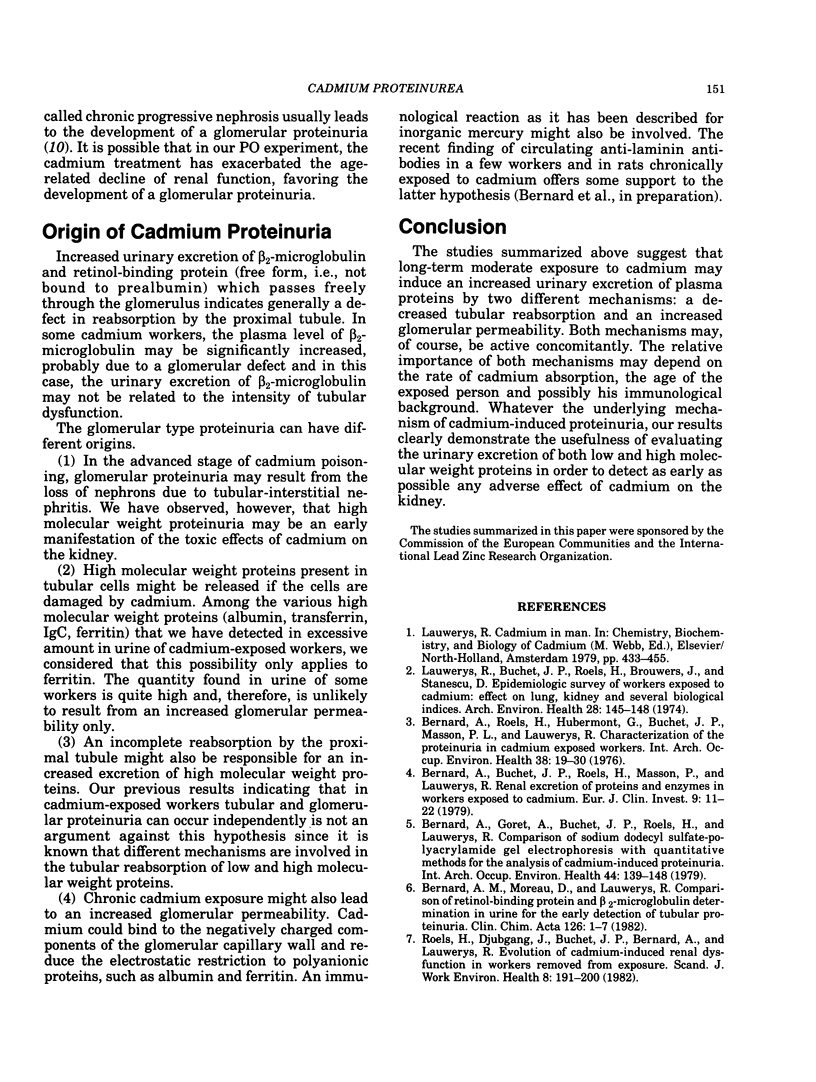

Images in this article
Selected References
These references are in PubMed. This may not be the complete list of references from this article.
- Bernard A. M., Moreau D., Lauwerys R. Comparison of retinol-binding protein and beta 2-microglobulin determination in urine for the early detection of tubular proteinuria. Clin Chim Acta. 1982 Nov 24;126(1):1–7. doi: 10.1016/0009-8981(82)90356-4. [DOI] [PubMed] [Google Scholar]
- Bernard A., Buchet J. P., Roels H., Masson P., Lauwerys R. Renal excretion of proteins and enzymes in workers exposed to cadmium. Eur J Clin Invest. 1979 Feb;9(1):11–22. doi: 10.1111/j.1365-2362.1979.tb01662.x. [DOI] [PubMed] [Google Scholar]
- Bernard A., Goret A., Buchet J. P., Roels H., Lauwerys R. Comparison of sodium dodecyl sulfate-polyacrylamide gel electrophoresis with quantitative methods for the analysis of cadmium-induced proteinuria. Int Arch Occup Environ Health. 1979;44(3):139–148. doi: 10.1007/BF00381129. [DOI] [PubMed] [Google Scholar]
- Bernard A., Lauwerys R., Gengoux P. Characterization of the proteinuria induced by prolonged oral administration of cadmium in female rats. Toxicology. 1981;20(4):345–357. doi: 10.1016/0300-483x(81)90041-x. [DOI] [PubMed] [Google Scholar]
- Bernard A., Roels H., Hubermont G., Buchet J. P., Masson P. L., Lauwerys R. R. Characterization of the proteinuria in cadmium-exposed workers. Int Arch Occup Environ Health. 1976 Oct 21;38(1):19–30. doi: 10.1007/BF00378317. [DOI] [PubMed] [Google Scholar]
- Gray J. E. Chronic progressive nephrosis in the albino rat. CRC Crit Rev Toxicol. 1977 Sep;5(2):115–144. doi: 10.3109/10408447709003377. [DOI] [PubMed] [Google Scholar]
- Lauwerys R. R., Buchet J. P., Roels H. A., Brouwers J., Stanescu D. Epidemiological survey of workers exposed to cadmium. Arch Environ Health. 1974 Mar;28(3):145–148. doi: 10.1080/00039896.1974.10666455. [DOI] [PubMed] [Google Scholar]
- Roels H., Djubgang J., Buchet J. P., Bernard A., Lauwerys R. Evolution of cadmium-induced renal dysfunction in workers removed from exposure. Scand J Work Environ Health. 1982 Sep;8(3):191–200. doi: 10.5271/sjweh.2476. [DOI] [PubMed] [Google Scholar]
- Roels H., Lauwerys R., Buchet J. P., Bernard A., Garvey J. S., Linton H. J. Significance of urinary metallothionein in workers exposed to cadmium. Int Arch Occup Environ Health. 1983;52(2):159–166. doi: 10.1007/BF00405419. [DOI] [PubMed] [Google Scholar]



